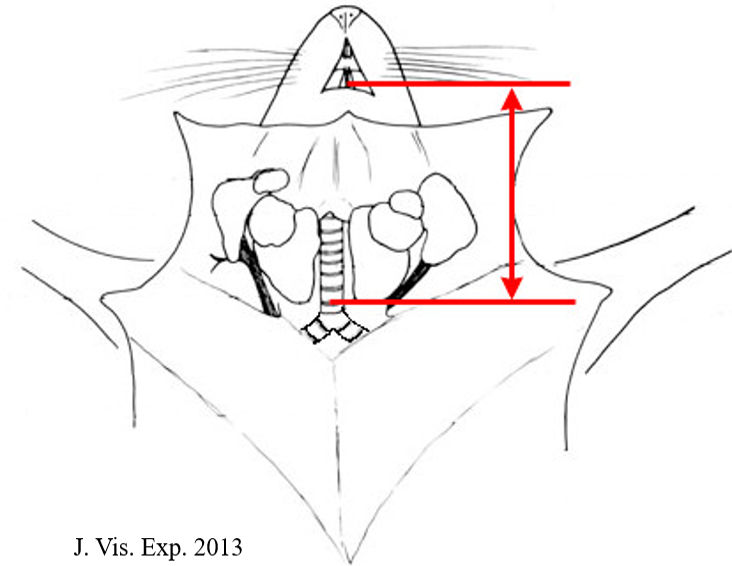The intratracheal instillation technique is used to deliver a variety of agents to the lungs. The intratracheal technique can involve the non-invasive instillation method or a direct injection into the trachea. In this protocol, we present the experimental procedure of the non-invasive instillation in the mouse as follows.
Preparation
●Anaesthetize the mouse by subcutaneous injection of ketamine (100 mg/kg) and xylazine (10 mg/kg).
●Apply eye ointment such as Oculentum simplex, Teva Pharmachemie to the mouse eyes as to keep eyes moist.
●The position of the intubation can be determined by dissecting a mouse before the experiment. In general, the reference distance for insertion is about 1.5 cm for a black adult mouse (25g).
●Fix the anesthetized mouse on an inclined plane with an about 60° angle and suspend the mouse by its incisors with a piece of ribbon in the supine position on the platform, which will prevent the head from a violent shake.
Injection
●Carefully open the mouse's mouth and gently pull the mouse tongue out with blunt-ended forceps. Insert the Exel Safelet IV indwelling needle (24G) slowly into the trachea, then gently remove the needle. Please note the distance is about 1.5 cm when inserting.
●Inject 75 μl virus (or sterile PBS/normal saline as control) into the tip of the indwelling needle. Hold the mouse upright for a few seconds to allow virus to be inhaled into the lungs. It is necessary to control the volume of the virus so as to avoid the mouse being choked.
Post-injection care
●Remove the mouse and place it prone on a heating pad for recovery.
If you have any questions,please email us at
sales@brainvta.com.
